A Short History of the Modern Bar Code
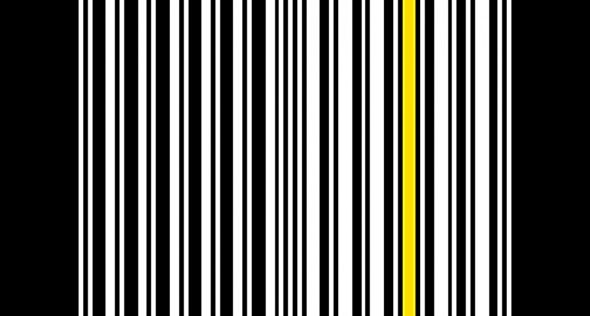
Courtesy of Liz Ensz
Roman Mars’ podcast 99% Invisible covers design questions large and small, from his fascination with rebar to the history of slot machines to the great Los Angeles Red Car conspiracy. Here at The Eye, we cross-post new episodes and host excerpts from the 99% Invisible blog, which offers complementary visuals for each episode.
This week's edition—in which 99% Invisible producer Katie Mingle spoke with UPC inventor George Laurer, MIT mechanical engineering professor Sanjay Sarma, and Jerry Whiting of Barcode Nerds and Azalea Software about bar codes—can be played below. Or keep reading to learn more.
When George Laurer goes to the grocery store, he doesn’t tell the checkout people that he invented the bar code, but his wife used to point it out. “My husband here’s the one who invented that bar code,” she’d occasionally say. And the checkout people would look at him like, “you mean there was a time when we didn’t have bar codes?”
A time without bar codes is hard to imagine now. But it wasn’t that long ago, and the story doesn’t start with George Laurer. It starts with an engineer named Joseph Woodland. In 1948 Woodland was trying to come up with simple symbol that, when scanned, would translate to a number that a computer could use to identify a product.
Legend has it that he came up with his design while sitting on the beach in Miami. He was puzzling over the whole thing, thinking about Morse code and tracing circles in the sand. When finally, bull's-eye!
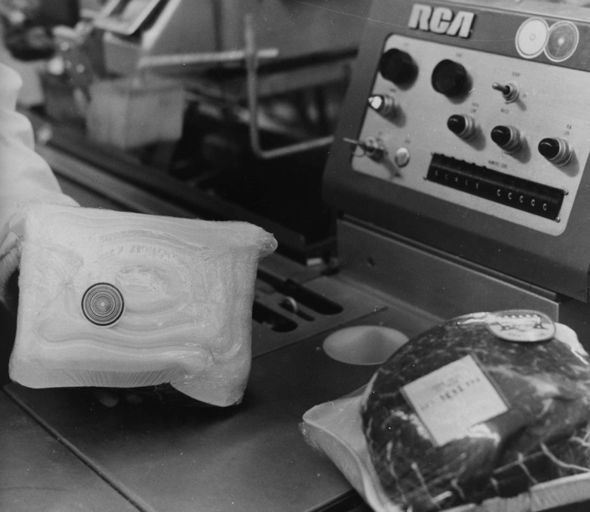
Courtesy of Bill Selmeier via ID History Museum
The very first bar codes were in the shape of a bull's-eye, though they weren’t called “bar codes” yet. Woodland’s invention was patented in 1952 as a “Classifying Apparatus and Method.” But Woodland’s “apparatus” would gather dust for 20 years—the scanners and other equipment needed to put the system in place were too expensive.
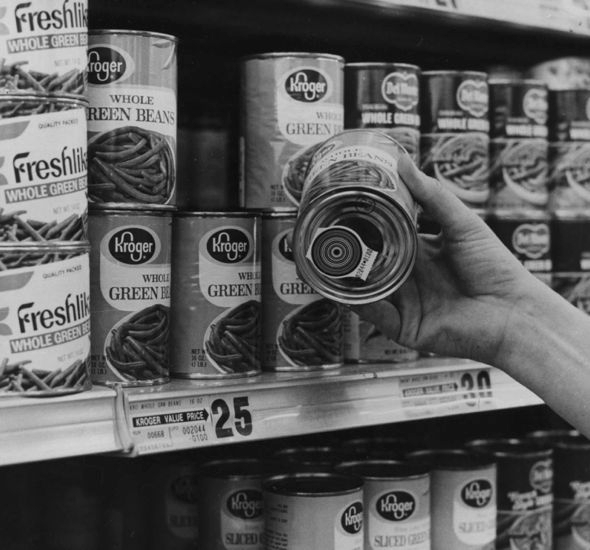
Courtesy of Bill Selmeier via ID History Museum
Finally, in 1973, a group of supermarket executives led by Alan Haberman decided they needed to get some kind of scannable symbol in place to move people through checkout lines faster. They laid out a list of specifications that their ideal symbol would have and asked 14 companies, including IBM, to come up with a solution.
That’s where George Laurer comes into the story.
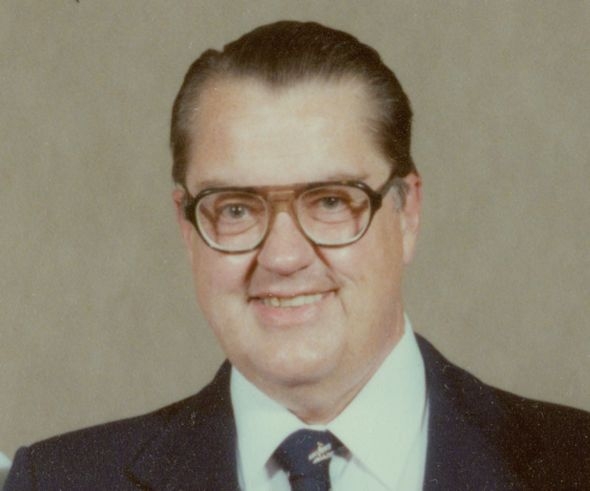
Courtesy of Bill Selmeier via ID History Museum
Laurer was working at IBM at the time and was tasked with making Woodland’s circular “Classifying Apparatus and Method” work. But Laurer didn’t think the bull's-eye would fulfill the specifications set forth by the grocery industry. So he set out to make something that would. Eventually, Laurer came up with a rectangular design that fit more code into less space and didn’t smear on the presses (like Woodland’s bull's-eye symbol did). The “Symbol Selection Committee” voted unanimously for Laurer’s rectangular symbol and code, which they named the Universal Product Code, or UPC. A year later, in 1974, a pack of Wrigley’s chewing gum became the first item to be scanned with a UPC bar code.
According to GS1 (Global Standards One), the agency which issues bar code numbers, there are now about 5 billion bar codes scanned every day around the world.
Laurer and Woodland’s original bar codes have spawned a whole bunch of other bar codes that are used for all kinds of things. There’s Code 128, which is mostly used for packaging and shipping. There’s POSTNET, which is used by the post office to sort mail. There are bar codes that use radio frequencies to send out data, which are called RFID tags (though they aren’t really bar codes at all, they just get put in the same category because they have a similar function as bar codes).
And of course, there’s the all-too-ubiquitous QR (“quick response”) code.
QR codes can be scanned with a cellphone (using any number of apps). Generally they link you to a website. Advertisers have been slapping them on so many things that people are experiencing "QR code fatigue."
Unlike UPC bar codes, there is no central agency (Like GS1) giving them out. Anyone can get one at any time. Which allows people to do stuff like this.
Bar code art is nothing new. People have been getting bar code tattoos since the late 1980s in defiance of the capitalist, consumerist system bar codes have come to represent. Jerry Whiting will design one for you, even though he doesn’t think bar codes should be blamed for our frustrations about being a "cog in a larger monolithic machine.”
After Woodland’s bull's-eye symbol was patented—but before Laurer’s UPC symbol was first implemented—railways experimented with a system called KarTrak to keep track of train cars. It worked a bit differently than Laurer and Woodland’s bar codes, and ultimately it didn’t work that well. It was abandoned in the early 1970s.
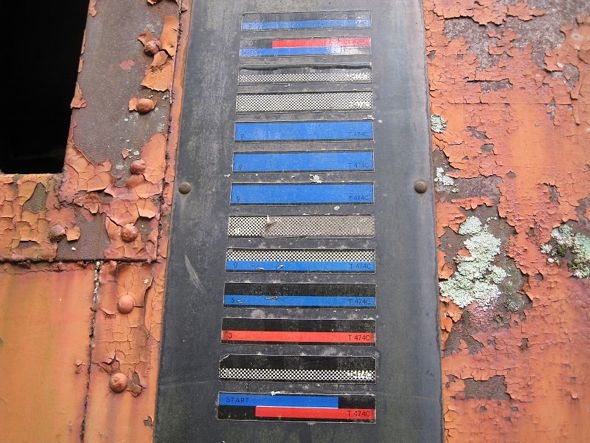
Courtesy of Quinn Ross via Flickr
Bar codes have penetrated so deeply into popular imagination that there is even a conspiracy theory about them. Some people believe that the number of the beast (666) is encoded into every UPC bar code. It’s more or less true that there are three sixes encoded into every bar code; the answer to why is bit technical (and has nothing to do with Revelations or Satan). George Laurer addresses it on his website (where you can see that he’s clearly tired of addressing it). But if you still aren’t convinced that Laurer isn’t a satanist, we suggest you listen to the radio story. He may be the nicest man we’ve ever interviewed.
To learn more, check out the 99% Invisible post or listen to the show.
99% Invisible is distributed by PRX.
